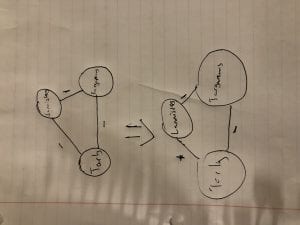Actions In Game of Thrones As Understood By Graph Theory
Graph theory is constantly being applied to Game of Thrones in order to better understand the complex and ever-changing social network between the backstabbing characters. Throughout the series, houses flip between being allies and enemies solely based off a whim. However, we can better understand the reasoning between these houses moves if we break their decisions down using graph theory. If we say that allies have a positive relationship and enemies and have negative relationship, we can apply the structural balance theory. For example, the Tarly’s were historically enemies with the Lannisters and always fought against them. The Lannisters throughout history were enemies with the Targaryens, and even rebelled against them. This triadic closure would form an unbalanced triangle, as there are no positive edges in the closure, so this relationship is not beneficial for anyone.
The Structural Balance Theory states that a triadic closure is strong and balanced if it is formed with the idea that “the enemy of my enemy is my friend”. This is exactly what happened when the Tarly’s and the Lannister’s became allies and teamed up against the Targaryens. These two houses hated each other, but formed a strong bond when the Targaryens became a common enemy. This is just one of the many examples in Game of Thrones where graph theory can be applied to understand the actions of the characters and houses.
Link: https://news.northeastern.edu/2017/08/25/the-game-of-thrones-social-network/

